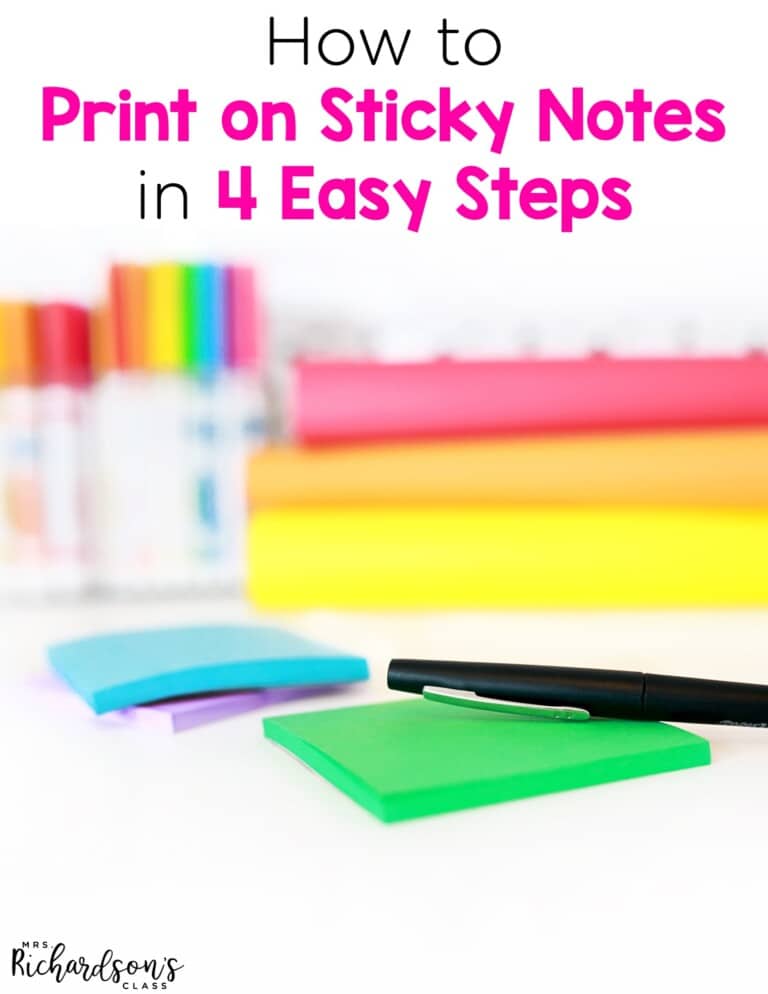

I search my students’ faces until I see it – that lightbulb moment when they’ve grasped another reading comprehension strategy. That moment when sweet “Jane” understood why making connections to our books help her grow as a reader. Simple making connections activities and strong read alouds helped her blossom as a reader. These are the small moments I love witnessing in the classroom!
Why is something this so seemingly small important? Because it will help these young readers grow into strong adult readers. Maybe even adults who love to read.
But teaching things like making connections in reading sometimes gets wrapped up in long, complicated processes and lesson plans. Let’s simplify it all to dig into how to teach making connections and why our students need to be able to do it.
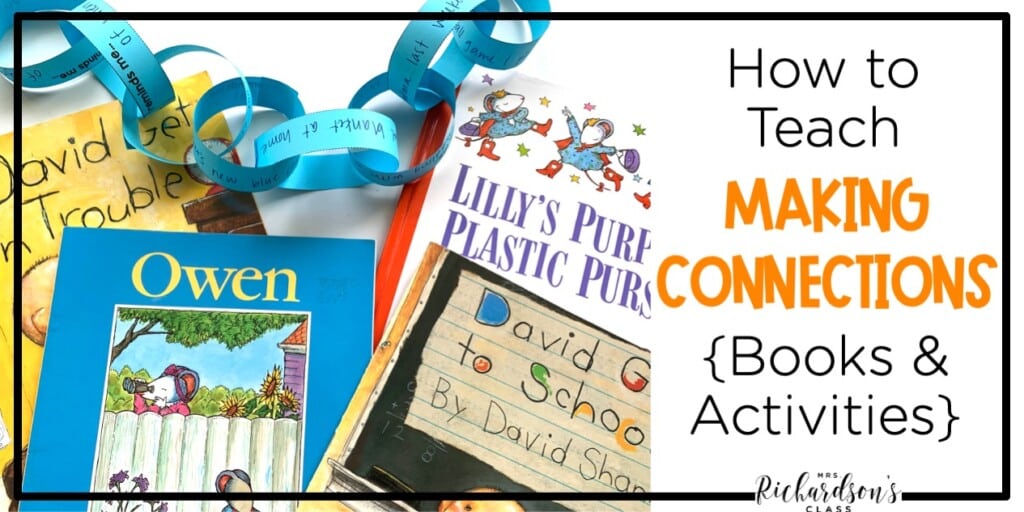
Amazon affiliate links are used below at no cost to you. This is a small way you can help support this blog.
When students are listening to or reading a book, we want them to comprehend what they read. If the ultimate goals of reading are to learn and to enjoy, then we must comprehend while we read. One strategy to build comprehension is to make connections to a text. There are three types of connections:
Making connections helps our young readers stay engaged while reading and think about their reading. Strong books and activities to support making connections will help solidify it for our readers. It’s one of many strategies readers use to understand the text and focus on the author’s message.
“Readers use strategies to help them understand what they read. One good strategy you can use is to make connections from the book to your own life.” We want our young readers to know and understand the importance of understanding a book.
Read the text aloud and model your thinking out loud. Talk about each connection you make with a text- shallow and deep connections. I like to flip through a book and leave sticky notes with my connections jotted down so I don’t forget one.
Have students think-pair-share during a read aloud to practice making connections, write and share connections, and complete interactive writing pieces together. Encourage them to move from “I also have a purple shirt.” to deeper connections about the character’s feelings, events in the book, and comparing/contrasting ideas from the book.
Ask students to share their connections with each other and you. I like to do a combination of sharing out loud and writing them down.
When sharing, either way, try to have students start with what happened in the book. “When __ did __ in the book, it reminded me of __.” Build the bridge between the event in the book and their own life (or book or the world), not just sharing a story about themselves. Ask them, “What does this connection help you understand?”
These wonderful books provide many opportunities for young readers to make connections while reading. They also easily lend themselves to making connections activities (more on that later). They are also quick and easy books to read that you probably already have in your classroom or school library.
This book stars a young mouse named Owen who loves his yellow blanket and takes it everywhere. When it’s time for school to start, Owen’s parents want him to let it go.
It’s a great book to introduce or reinforce making connections because there are many relatable events and characters. With this book, you could guide students’ thinking by asking questions like:
You can get a copy of the book on Amazon HERE. While I always recommend reading from a physical book, you can find Kevin Henkes reading his book HERE. Videos of read alouds are great options for a reread!
This book is about a mouse named Lilly who gets her favorite new toy taken away by her beloved teacher for playing with it during the day. In anger, she does something hurtful. She later feels bad and finds a way to apologize and make up with her teacher.
This book is jam-packed with opportunities for students to make connections. Some questions to ask students to get them to start thinking can include:
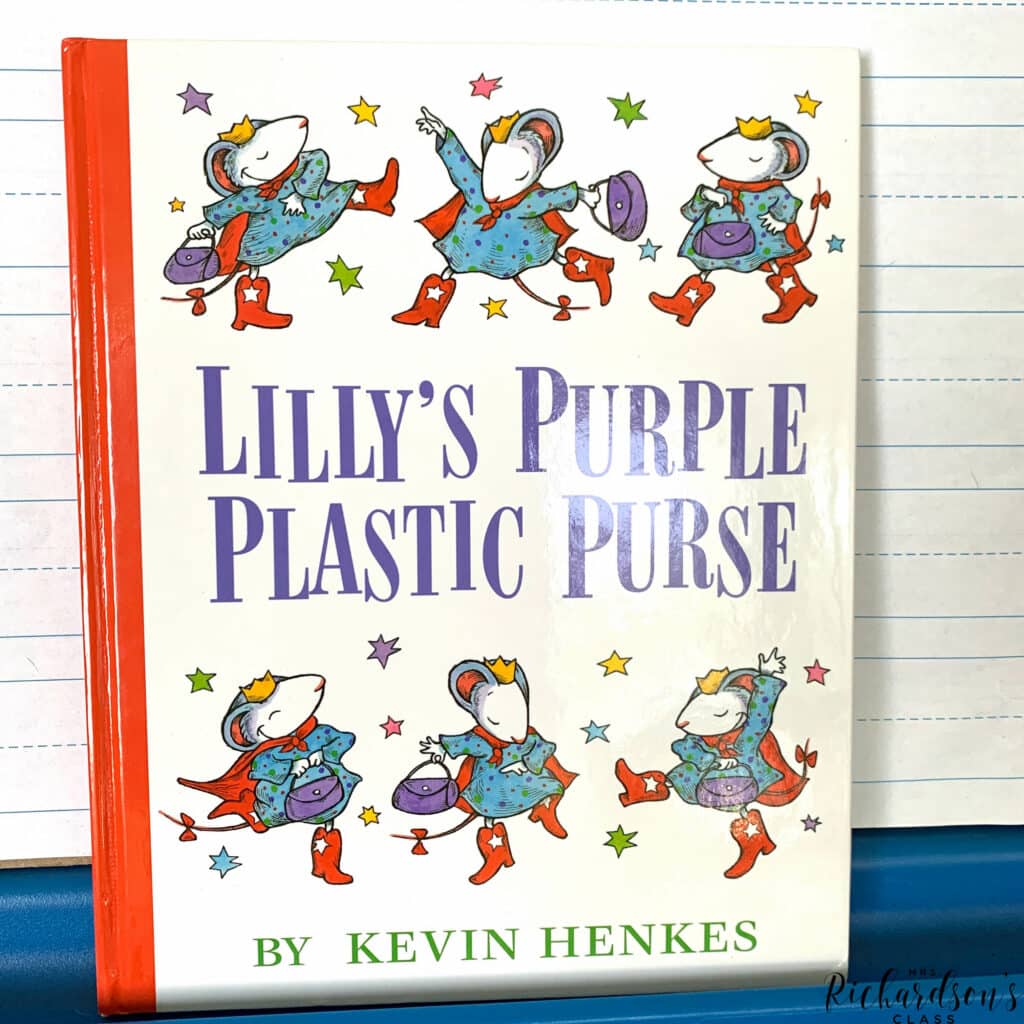
You can grab your own copy of the book on Amazon HERE.
Kids always love this series! In this book, David goes to the first day of school and has some trouble following the rules. I love using the book at the beginning of the year to introduce classroom expectations or to review them mid-year. Get your students to make connections by guiding them with some questions like:
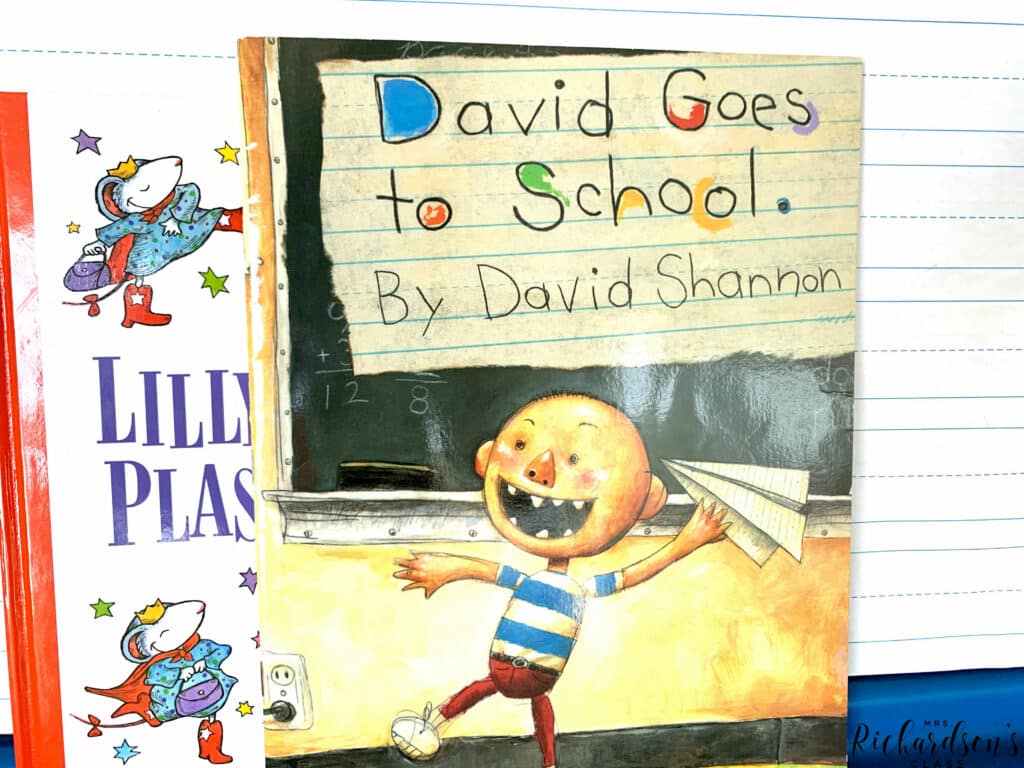
You can purchase the book HERE and watch a read aloud video of it HERE.
Another popular children’s book about a boy named David who makes lots of excuses for his bad behavior. In the end, he does admit that it was his fault and apologizes. What a great segway to helping also teach students about taking ownership of their actions and apologizing when necessary! Dive into building connections with the text with some guiding questions:

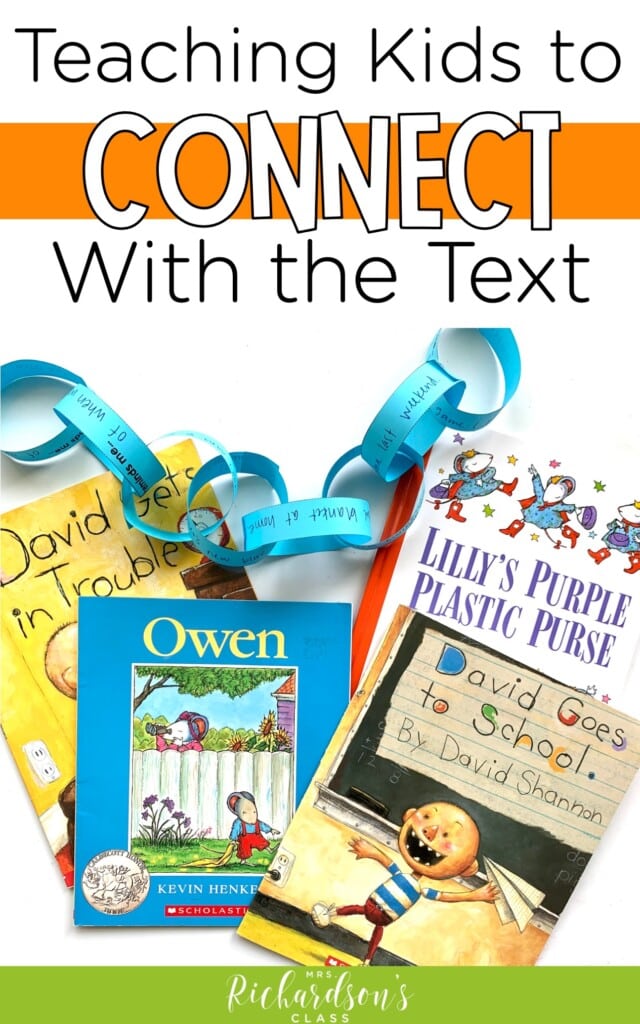
Let’s make diving into teaching making connections with high-quality books and detailed lesson plans already made for you! The Let’s Make Connections Interactive Read Aloud unit has everything you need to help your students master this reading strategy.
This unit includes:
Watch for the moments when your students “get it”. They’re some of my favorite ones! Once they do understand the concept, get ready to take them deeper into their thinking.
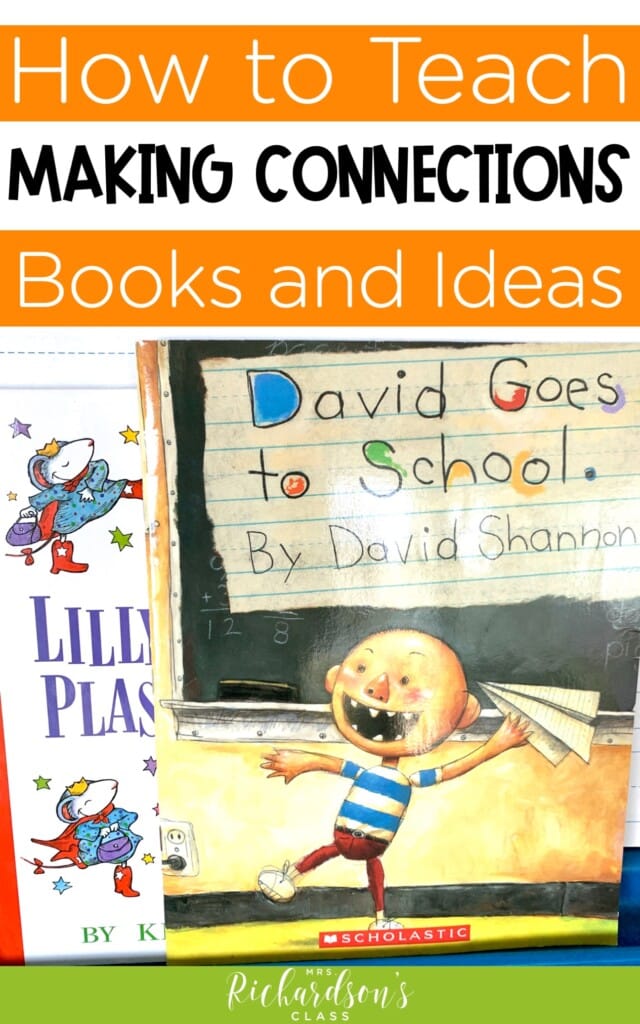
They might be young, but they can do it. Remember, making connections is an important part of reading comprehension.

Want to use the latest research to boost your readers during small groups? This FREE guide is packed with engaging ideas to help them grow!

I’m a K-1 teacher who is passionate about making lessons your students love and that are easy to implement for teachers. Helping teachers like you navigate their way through their literacy block brings me great joy. I am a lifelong learner who loves staying on top of current literacy learning and practices. Here, you’ll find the tools you need to move your K-2 students forward!


| Cookie | Duration | Description |
|---|---|---|
| cookielawinfo-checkbox-analytics | 11 months | This cookie is set by GDPR Cookie Consent plugin. The cookie is used to store the user consent for the cookies in the category "Analytics". |
| cookielawinfo-checkbox-functional | 11 months | The cookie is set by GDPR cookie consent to record the user consent for the cookies in the category "Functional". |
| cookielawinfo-checkbox-necessary | 11 months | This cookie is set by GDPR Cookie Consent plugin. The cookies is used to store the user consent for the cookies in the category "Necessary". |
| cookielawinfo-checkbox-others | 11 months | This cookie is set by GDPR Cookie Consent plugin. The cookie is used to store the user consent for the cookies in the category "Other. |
| cookielawinfo-checkbox-performance | 11 months | This cookie is set by GDPR Cookie Consent plugin. The cookie is used to store the user consent for the cookies in the category "Performance". |
| viewed_cookie_policy | 11 months | The cookie is set by the GDPR Cookie Consent plugin and is used to store whether or not user has consented to the use of cookies. It does not store any personal data. |
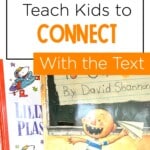
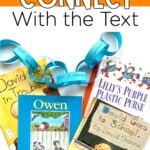
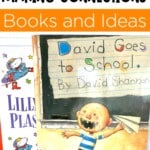
4 Responses
This information has really helped me and my learners because I have been able to explain and model the lesson to their understanding. Thank you.
I see the importance of applying this to second grade to further develop their understanding of text.
I love the idea of using read-alouds to help kids make connections! It’s such a relatable and engaging way to deepen their understanding of the text. I can’t wait to try out the activities you suggested—especially the ones that encourage personal connections. Thank you for sharing these valuable strategies!
This post is such a valuable resource! I love the idea of using read-alouds to help kids make connections. The suggested activities are practical and engaging, making it easy to incorporate into my classroom. Can’t wait to try these strategies and see how my students respond! Thank you for sharing!